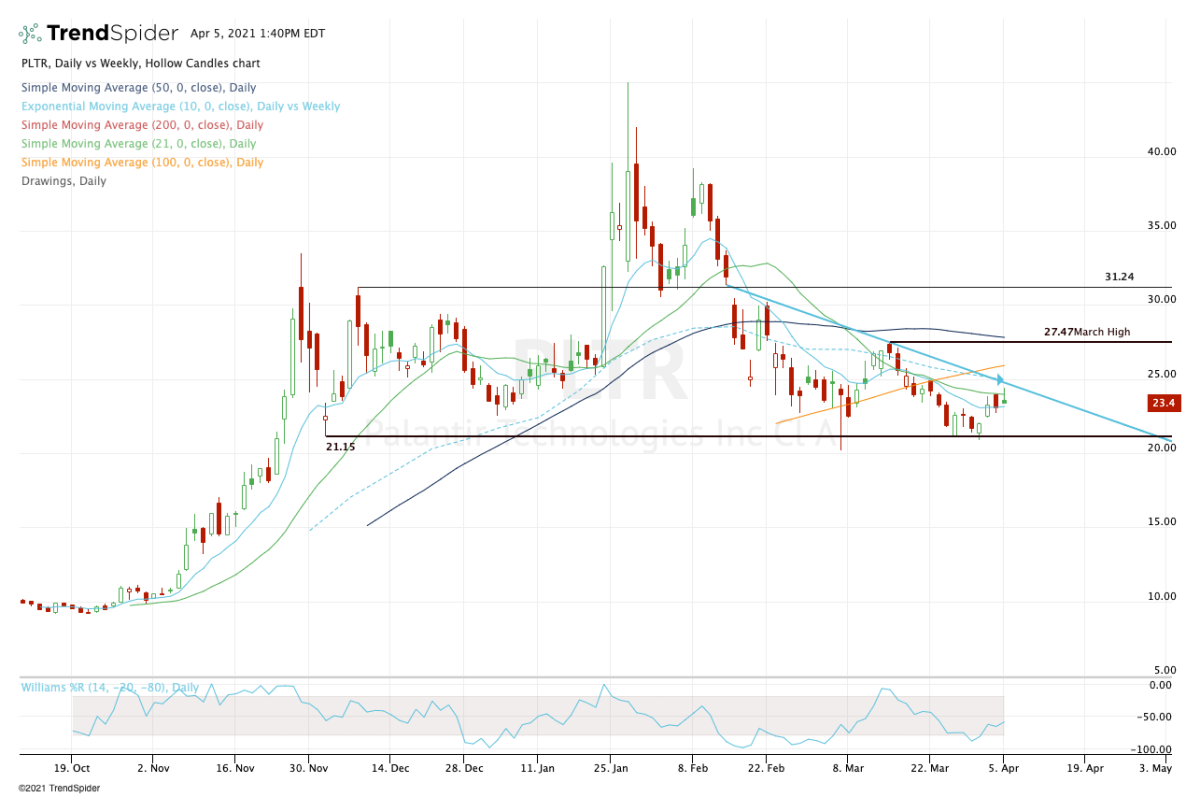Apple's AI Crossroads: Innovation Or Obsolescence?

Table of Contents
Apple's Current AI Landscape
Apple already incorporates AI into many of its products and services. Siri, its virtual assistant, is perhaps the most visible example, alongside sophisticated image recognition in its iPhones and powerful health features in the Apple Watch. However, a closer examination reveals both strengths and weaknesses in Apple's current AI approach.
Siri's Limitations
While Siri offers basic functionality like setting reminders and making calls, its capabilities lag behind competitors like Google Assistant and Alexa. Its limitations stem from several factors:
- Limited contextual understanding: Siri often struggles to understand complex queries or nuanced requests, leading to frustrating user experiences.
- Dependence on internet connectivity: Many Siri features require a constant internet connection, hindering functionality in areas with poor connectivity.
- Inconsistent performance: Siri's accuracy and responsiveness can vary significantly, resulting in an unreliable user experience.
To truly compete, Apple needs significant improvements in natural language processing (NLP) and a more personalized experience tailored to individual user preferences and habits. Enhanced contextual awareness and offline capabilities are crucial for future growth.
AI-Powered Hardware and Software Integration
Apple cleverly integrates AI into its hardware, enhancing user experience and creating a seamless ecosystem. This is evident in several areas:
- Advancements in image processing: The computational photography capabilities of iPhones leverage AI for stunning image quality, even in challenging lighting conditions.
- On-device machine learning: Apple prioritizes on-device processing for many AI tasks, preserving user privacy and ensuring faster response times.
- Privacy considerations: This focus on on-device processing is a key differentiator, emphasizing Apple's commitment to user data protection, a crucial aspect of modern AI development.
Apple’s strength lies in this tightly integrated hardware and software approach, offering a more cohesive and private AI experience.
Competition and the AI Arms Race
Apple faces intense competition from major tech giants aggressively pursuing AI dominance. This “AI arms race” necessitates a proactive and innovative approach to remain competitive.
Google's AI Dominance
Google's extensive data resources, exceptional talent pool, and aggressive research and development efforts position it as a leading AI force. Its influence spans numerous sectors:
- Dominant search engine: Google’s search algorithm relies heavily on sophisticated AI algorithms.
- Cloud computing dominance: Google Cloud Platform (GCP) offers powerful AI and machine learning tools to businesses worldwide.
- Autonomous vehicles: Waymo, a Google subsidiary, is a key player in the development of self-driving cars.
Google’s breadth and depth of AI expertise pose a significant challenge to Apple.
Microsoft's Strategic AI Investments
Microsoft's strategic integration of AI into its products and services presents another formidable competitor. Its investments include:
- AI-powered Office 365 features: Microsoft integrates AI into its productivity suite for tasks like smart replies and automated document summarization.
- Azure cloud platform: Azure provides businesses with a comprehensive suite of AI and machine learning services.
- Strategic partnerships and acquisitions: Microsoft actively invests in AI startups and collaborates with leading researchers.
Microsoft's broad AI ecosystem is another major hurdle for Apple to overcome.
Apple's Potential for AI Breakthroughs
Despite the challenges, Apple possesses several key strengths that could fuel future AI innovation:
Focus on Privacy and User Data
Apple’s unwavering commitment to user privacy could become a key differentiator. A privacy-focused AI approach could attract users concerned about data security, potentially offering a competitive advantage:
- Ethical AI development: Prioritizing privacy could position Apple as an ethical AI leader.
- Trust and brand loyalty: A strong privacy stance could enhance user trust and brand loyalty.
This approach has the potential to resonate strongly with consumers increasingly wary of data collection practices.
Potential for Hardware-Software Synergy
Apple's integrated ecosystem provides a unique opportunity for innovative AI experiences. The synergy between hardware and software could unlock breakthroughs in areas like:
- Augmented reality (AR): AI could significantly enhance Apple's AR capabilities, creating more immersive and interactive experiences.
- Personalized healthcare: The Apple Watch and iPhone's health features could benefit from advanced AI algorithms for personalized health monitoring and disease prediction.
Obstacles and Challenges for Apple in AI
While Apple possesses strengths, significant challenges remain:
Data Acquisition and Accessibility
Apple's approach to data collection, prioritizing user privacy, limits the size of its datasets compared to competitors. This presents a challenge:
- Training AI models: Large datasets are crucial for training sophisticated AI models.
- Balancing privacy and data needs: Finding a balance between privacy and the need for data to train effective AI algorithms is a crucial balancing act.
Talent Acquisition and Retention
The fierce competition for top AI talent is a significant hurdle. Attracting and retaining skilled engineers and researchers is essential for Apple’s AI ambitions. The talent pool is limited, and competing companies are actively trying to hire the best in the field.
Conclusion
Apple finds itself at a crucial crossroads in AI. While its current AI applications are integrated and relatively private, they lag behind competitors in terms of breadth and sophistication. The company's strengths lie in its hardware-software synergy, focus on privacy, and strong brand loyalty. However, challenges in data acquisition, talent acquisition, and the intense competition from Google and Microsoft demand a proactive and innovative AI strategy. The future of Apple, arguably, hinges on its ability to navigate this AI crossroads successfully. To stay relevant and competitive, Apple needs to invest further in AI research and development, potentially through strategic acquisitions, partnerships, and a shift toward more data-driven AI strategies whilst retaining its privacy-focused approach. Continue following Apple’s progress in the AI field and anticipate future developments related to Apple's AI strategy and its impact on the technological landscape.

Featured Posts
-
 To Buy Or Not To Buy Palantir Stock Weighing The 40 2025 Prediction
May 10, 2025
To Buy Or Not To Buy Palantir Stock Weighing The 40 2025 Prediction
May 10, 2025 -
 Can Canh Nhan Sac Thang Hang Cua Lynk Lee Sau Chuyen Gioi
May 10, 2025
Can Canh Nhan Sac Thang Hang Cua Lynk Lee Sau Chuyen Gioi
May 10, 2025 -
 Edmonton Oilers Comeback Wins Game 2 Against Los Angeles Kings
May 10, 2025
Edmonton Oilers Comeback Wins Game 2 Against Los Angeles Kings
May 10, 2025 -
 Harry Styles Honest Reaction To A Bad Snl Impression
May 10, 2025
Harry Styles Honest Reaction To A Bad Snl Impression
May 10, 2025 -
 Decoding The Debate Trumps Policy On Transgender Individuals In The Military
May 10, 2025
Decoding The Debate Trumps Policy On Transgender Individuals In The Military
May 10, 2025
